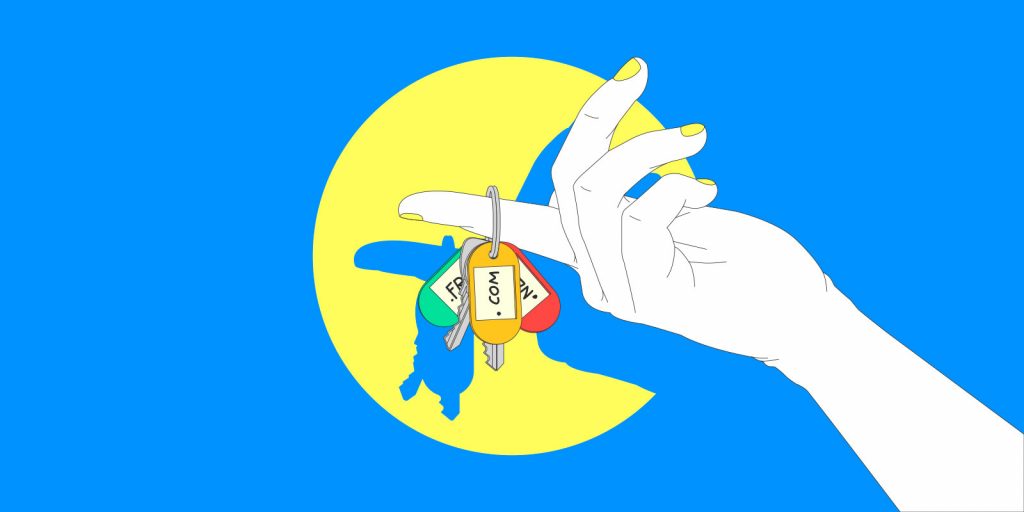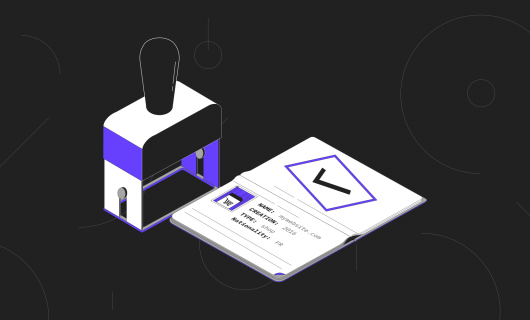If the internet belonged to just one person or one company, in some ways, everything would be much simpler: the domain name market would be a monopoly and you would just need to be the highest bidder in order to get a “web address” for your website. And as a result, this person or business would be immensely rich. But that’s not actually how it works, and domain nme management is decentralized, sometimes escaping the laws of the market, but still remains coherent. Let’s take a look at who makes this aspect of the internet work across continents and over he course of decades.
What is “domain name management?”
Before digging in to those in charge of managing domain names, let’s first ask what managing a domain name means. Domain name management consists, of course, in distributing domain names, but also in ensuring the expected content is accessible.
1. Domain names are managed with a database
Presented simply, “domain name management,” is to be able to maintain a directory of sorts that links domain names to servers. We can imagine this, then, as a great registry in which the relationship between reachable servers (and hence connected and identified as such in a network) and easily remembered names that say something about the content to be expected on the sites hosted on these servers. This is what the “Domain Name System” (DNS) does: link a textual address to various information, particularly an IP address, and do it quickly enough so you don’t have to search in a database of several hundred million servers to find what you’re looking for. For this “universal resolution” to be possible, there needs to be more than just one single database, but several, wisely placed and hierarchized.
2. Coordinate different databases
Since this management is not totally centralized and there are multiple registries of various kinds, it’s necessary to make these databases communicate with each other. In the same way that the attribution of phyisical addresses — a building number, name of the street, postal code — is decided locally but allows you to receive a postcard from the other side of the world, the attribution of domain names should also be made according to certain norms. The creation, maintenance, and modernization of these norms is itself a part of the work of managing domain names.
Managing domains, then, means controling their attribution and ensuring that the addresses are functional at a global level. These different missions are ensured by local actors in large part coordinated by a central organization.
ICANN, supervisor of the operational stability of the internet
This central role is ensured by the Internet Corporation for Assigned Names and Numbers (ICANN). ICANN is a non-profit organization founded in 1998 that carries out different critical missions for the functioning of domain names on the internet.
1. Attributing protocol IDs
Before linking an IP address to a domain name, these IP addresses need to also be attributed correctly. Part of ICANN’s mission, then, is to allocate space in the Internet Protocol (IP) addresses and attribute them. This is themission carried out by the Internet Assigned Numbers Authority (IANA), now part of ICANN. Once servers and terminals are “reachable,” then it’s possible to implement a domin name system (DNS). As we’ll see, this task is further delegated to other organizations.
2. Approve the creation of all new domain endings
It’s ICANN’s job to regulate the number and diversity of available so-called “generic” domain endings (“gTLD,” for “generic Top-Level Domain). Each new gTLD is subject to an application process where applications for new gTLDs are studied and eventually validated by the organization. Using this process, in 2005, a significant increase in the number of TLDs with a wide range of usable characters was decided on. A few years later, more than 300 domain endings (sometimes referred to as domain “extensions”) were open for registration, fundamentally changing the nature of the domain name market. Since 2000, ICANN has also attributed national country-code TLDs (ccTLDs), typically just two letters long, to various national authorities (whether sovereign states or autonomous territories).
3. Coordinate the management of technical aspects of DNS
Cutting across its other missions, ICANN also guarantees the technical aspects of the DNS system. For that, standarization work is undertaken with different stakeholders, particularly registries, in order to ensure that an internt user can access all domains with the same ease as any other, despite being managed by distinct entities.
ICANN is, then, at the heart of this system, but this organization is not the only one in charge of domain name management, the management being spread out between “top-level domains,” the ending of your domain name. Each of these domain endings, or extensions, depends on a single Registry to manage the domain names using that domain ending.
The Registry, manager of each each TLD
As we saw, the management of your domain name has been delegated to an organization, the registry, according to the domain ending, or TLD (Top Level Domain). Depending on the case, the registry in charge of your domain name is a governmental authority (for ccTLDs, “country code,” TLDs, country-specific domain extensions), a private company, or another form of independent organization.
1. The management of ccTLDs
If your domain name is registered in one of these country TLDs, it will be managed by an organization mandated by the government of the country in question. For example, a .fr site depends on the Association Française pour le Nommage Internet en Coopération (AFNIC), whose mission, besides attributing .fr, .re, .tf, .pm, .yt, and .wf domain names, is also the development of the digital economy in the country. Each country will thus define its strategy for adding value to this asset in the interest of its economy, by fixing a particular pricing policy, by attaching certain conditions to the attribution of a domain name (for example, the requirement that your business be within a given territory) or even contributing, like AFNIC, to the emergence of local domain endings, or “geoTLDs” like .bzh, .paris, .alcsace, and even .corsica.
2. The management of generic TLDs
Registries in charge of “generic” domain endings are very diverse: these are businesses (like Verisign, notable for being the registry for .com), non-profit actors (like PIR, in charge of .org), some that only manage a single domain extension, others that manage hundreds … these are the organiations that submit applications to create new TLDs to ICANN. Depending on their specific structure, registries will implement their own strategy: makin a profit or supporting a community, are two examples.
The registry, then, is in charge of one or more TLDs, and works to bring them to market, ensure that they find their niche, and contributes to their spread generally. So does that mean you need to go to a registry to buy your domain name? Not necessarily.
The registrar: domain name “notary”
In order to compare the different options that you have when choosing a domain name, there are registrars like Gandi (to take a random example 😉) These organizations contract with the various registries and make a wide range of domain names available to private individuals and businesses alike.
But the main mission of a domain name registrar goes beyond just commercial intermediary.
- The domain registrar is the legal contact for the domain name owner. If a domain name is used in an abusive way, or if domain names are registered for illegal purposes (such as cybersquatting), the registrar’s Abuse service, designated in the Whois, is in charge of processing complaints and claims.
- The registrar is also responsible for the technical aspects of your domain name’s functioning. Here again, the Whois provides the registrar’s contact information for these questions.
From this point of view, the management of your domain name is ensured by the registrar who is in this sense a kind of “notary” for your domain names.
Conclusion: the domain owner also manages their domains
As we saw, the management of a domain name is divided between different levels of responsiblity: the technical coherence of the system of domain names is centralized by ICANN, which makes it possible for registries to manage the attribution of domain names for each of the domain extensions ICANN has approved. These registries accredit registrars to make domain names available for users. These registrars then become the point of contact for domain name owners at the commercial, technical, and legal levels.
But at the end of this chain, it’s the domain name owner who is ultimately in charge. Your domain name is your own online space, and you are responsible for your “zone file” which describes the DNS zone that you are now in charge of with your domain name and whichever subdomains you want to create.
Beyond this technical consideration, your domain name is an economic asset that you can use (or delegate to a third-party), over which you have a legal responsiblity. For example, AFNIC publishes a user guide for .fr domain name owners to raise awareness over their various responsibilities. It is, then, the responsibility of each domain name owner to manage their domain name, from a technical, but also legal, and commercial perspective.




